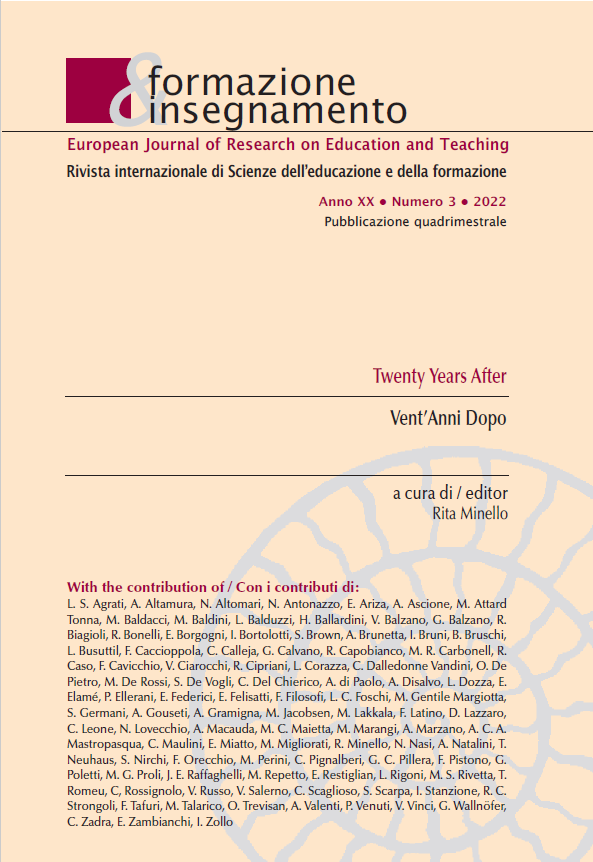For an aesthetic of training: Marcuse and rebellious subjectivity
DOI:
https://doi.org/10.7346/-fei-XX-03-22_04Keywords:
Aesthetics, Training, Subjectivity, Transcendence, ChangeAbstract
The objective of this article is to propose a hermeneutic of certain categories from the educational point of view. It is our conviction that Marcuse's critical investigation can represent a tool of self-formation also for the current young generation, to begin a journey towards “liberation”, aesthetic and political dimensions intertwine. Aesthetics has a decisive weight for the formation of the subject against the oppression of a socio-economic structure, increasingly a symbol of unstoppable crisis and total precariousness. Aesthetics, Marcusian vision, teaches not to surrender to the objectivity of evil and to place oneself, through creativity, always in opposition to the strongest because “another world is possible”. The alternative is built through a transformative sensitivity of the modes of thought and action; a sensitivity open to hope and to a concept of transcendence that represents the real fulcrum of the “qualitative difference”. An epistemological-hermeneutic implant is used, a qualitative analysis methodology.
References
Benjamin, W. (2014). Saggio su “Le affinità elettive” di Goethe (1924–25). In W. Benjamin, Angelus Novus: Saggi e frammenti. Torino: Einaudi.
Bloch, E. (2010). Spirito dell’utopia. Milano: Rizzoli.
Marcuse, H. (1967a). L’uomo a una dimensione: L’ideologia della società industriale avanzata (trad. it.: L. Gallino & T. G. Gallino). Torino: Einaudi.
Marcuse, H. (1967b). Eros e civiltà. Torino: Einaudi.
Marcuse, H. (1968). Critica della società repressiva (trad. it.: C. Camporesi). Milano: Feltrinelli.
Marcuse, H. (1969a). Saggio sulla liberazione: Dall’“uomo a una dimensione” all’utopia. Torino: Einaudi.
Marcuse, H. (1969b). Cultura e società: Saggi di teoria critica 1933-1965 (trad. it.: C. Ascheri, H. Ascheri Osterlow, & F. Cerutti). Torino: Einaudi.
Marcuse, H. (2005). Oltre l’uomo a una dimensione. Roma: Manifestolibri.
Perlini, T. (1968). Che cosa ha ‘veramente’ detto Marcuse. Roma: Ubaldini.
Perticari, P. (2002). Oltre l’imperativo: Herbert Marcuse tra rivoluzione e trascendenza. In H. Marcuse, La dimensione estetica: Un’educazione politica tra rivolta e trascendenza. Milano: Guerini e associati.
Downloads
Published
How to Cite
Issue
Section
License
Copyright (c) 2022 Anita Gramigna

This work is licensed under a Creative Commons Attribution 4.0 International License.
Formazione & insegnamento is distributed under Attribution 4.0 International (CC BY 4.0).
For further details, please refer to our Repository & Archiving Policy, as well as our Copyright & Licensing Terms.





